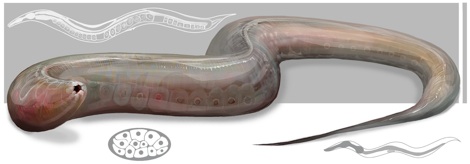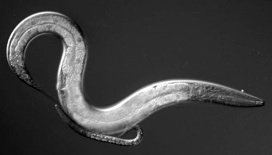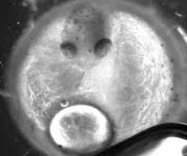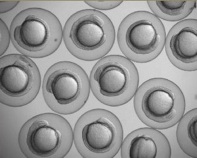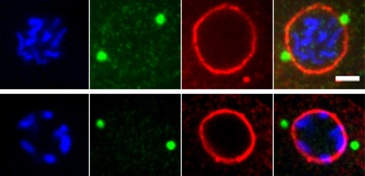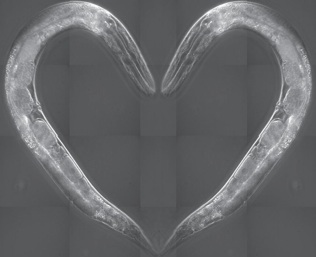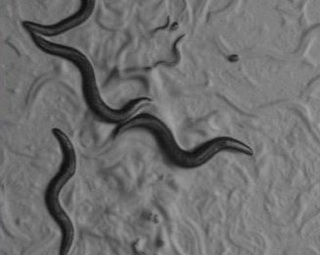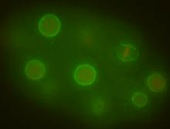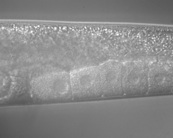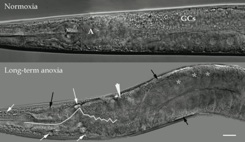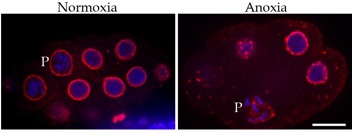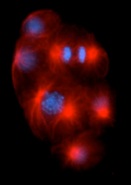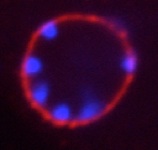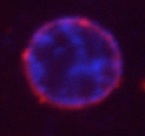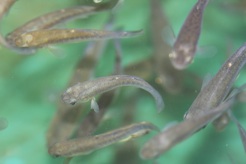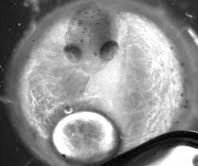ANOXIA-INDUCED SUSPENDED ANIMATION IN THE EMBRYO
There are known environmental changes that influence cell cycle progression (EX: UV radiation, Oxygen levels). Anoxia-exposed C. elegans embryos contain blastomeres that arrest at specific positions of the cell cycle: interphase, late prophase and metaphase. A hallmark of an anoxia-arrested prophase blastomere is that the condensed chromosomes associate with the inner nuclear periphery; we refer to this phenotype as “chromosome docking”. The phenomenon of anoxia-induced arrest is not unique to C. elegans since zebrafish (Danio rerio) and Drosophila melanogaster embryos also arrest cell cycle progression in response to anoxia or hypoxia. Genetic and cellular analysis has been instrumental in identifying processes that are likely involved in anoxia-induced suspended animation in C. elegans. The Padilla lab is interested in identifying the signaling pathway between low oxygen and reversible cell cycle arrest in the C. elegans embryo.
HYPOXIA AND DEVELOPMENT
The response C. elegans has to oxygen deprivation depends upon the level of oxygen within the environment. That is, in very extreme levels of oxygen deprivation (anoxia) the animals will arrest energy requiring processes. In low levels of environmental oxygen the developmental trajectory will be slowed and various behavior changes are observed. We are interested in further characterizing hypoxic responses and identifying the mechanisms involved with slowing of developmental trajectory and behavioral changes in response to hypoxia.
